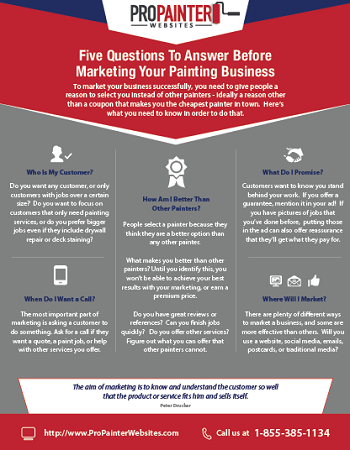Learn Exactly How Seasonal Factors Affect Commercial Outside Painting Success And Find The Very Best Times To Ensure Long-Term Outcomes For Your Project
Learn Exactly How Seasonal Factors Affect Commercial Outside Painting Success And Find The Very Best Times To Ensure Long-Term Outcomes For Your Project
Blog Article
Web Content Author-Aguilar Whalen
When you're planning a business exterior paint task, seasonal variables can make or damage your results. You'll wish to think about exactly how temperature level and humidity impact paint application and drying times. Selecting the ideal period can ensure your paint sticks correctly and lasts longer. Yet which seasons are truly the best for this type of job? Let's check out the crucial elements that can impact your job's success.
The Impact of Temperature Level on Paint Application
When you're intending a commercial exterior painting task, the temperature level can considerably impact exactly how well the paint sticks and dries out.
Preferably, you intend to paint when temperature levels vary between 50 ° F and 85 ° F. If it's as well chilly, the paint may not treat correctly, resulting in problems like peeling or breaking.
On the other side, if it's too hot, the paint can dry as well swiftly, preventing correct bond and leading to an uneven finish.
You must also think about the time of day; morning or late afternoon offers cooler temperatures, which can be more desirable.
Always inspect the maker's recommendations for the certain paint you're using, as they commonly give assistance on the perfect temperature variety for optimum results.
Moisture and Its Effect on Drying Times
Temperature level isn't the only environmental variable that influences your commercial external painting job; moisture plays a significant function too. High moisture degrees can reduce drying out times considerably, influencing the total high quality of your paint work.
When the air is filled with dampness, the paint takes longer to cure, which can bring about issues like inadequate adhesion and a higher threat of mold development. If you're repainting on a specifically damp day, be gotten ready for prolonged delay times in between layers.
It's essential to check local weather and plan appropriately. Preferably, go for moisture degrees between 40% and 70% for optimum drying out.
Keeping these factors in mind ensures your task remains on track and delivers a long-term finish.
Best Seasons for Commercial Outside Paint Projects
What's the best time of year for your commercial external painting jobs?
Springtime and very early fall are generally your best bets. During https://thewarhorse.org/a-portrait-of-a-soldier-inside-those-lines-was-the-story-of-war/ , temperatures are mild, and moisture degrees are commonly reduced, producing suitable problems for paint application and drying.
Prevent summertime's intense heat, which can cause paint to dry too promptly, resulting in poor attachment and coating. Likewise, winter months's cool temperature levels can hinder appropriate drying and treating, taking the chance of the longevity of your paint job.
Aim for days with temperatures between 50 ° F and 85 ° F for ideal outcomes. Remember to inspect the regional weather prediction for rain, as damp conditions can destroy your job.
https://painternearme44321.snack-blog.com/35553110/recognizing-dependable-repainting-professionals-secret-suggestions-and-strategies around these elements guarantees your paint job runs efficiently and lasts longer.
Verdict
Finally, planning your commercial external painting tasks around seasonal considerations can make a substantial distinction in the result. By scheduling job throughout the ideal temperatures and moisture degrees, you'll ensure far better bond and drying out times. Keep in mind to watch on neighborhood weather prediction and pick the right time of year-- springtime and early autumn are your best bets. Taking these actions will assist you accomplish a long lasting and specialist coating that lasts.
